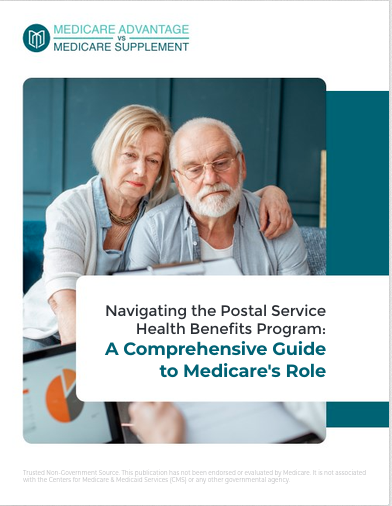Key Takeaways:
- Understanding your health needs is the first step in choosing the right Medigap plan.
- Comparing plan types and thoroughly reviewing benefits can help avoid feeling overwhelmed.
How to Choose the Right Medigap Plan Without Getting Overwhelmed
Choosing the right Medigap plan can feel overwhelming due to the variety of options and the complexity of health insurance. However, by understanding your healthcare needs and breaking down the selection process into manageable steps, you can make an informed decision that suits your situation. This guide will help you navigate the process, highlighting essential factors to consider and practical tips to ensure you choose the best Medigap plan without getting lost in the details.
Assess Your Healthcare Needs
The first step in selecting the right Medigap plan is to assess your healthcare needs. Medigap plans, also known as Medicare Supplement Insurance, are designed to cover gaps in Original Medicare, such as copayments, coinsurance, and deductibles. However, not all plans offer the same level of coverage, and your choice should align with your current and anticipated medical needs.
Start by considering the frequency of your doctor visits, the types of services you often require, and whether you anticipate needing specialized care in the near future. If you frequently visit specialists or require certain types of treatments not fully covered by Original Medicare, a more comprehensive Medigap plan might be necessary. Conversely, if your healthcare needs are minimal, a basic plan may suffice.
Understand Medigap Plan Options
Medigap plans are standardized across most states, meaning that the benefits of each plan type are consistent, regardless of the insurance company. There are currently ten standardized Medigap plans available, labeled A, B, C, D, F, G, K, L, M, and N. Each plan offers a different combination of benefits, so it’s crucial to understand what each plan covers.
For example, Plan F is one of the most comprehensive options, covering almost all out-of-pocket costs that Original Medicare does not cover. However, it is only available to those who were eligible for Medicare before January 1, 2020. Plan G is now considered the most comprehensive for new beneficiaries, with similar coverage to Plan F but without the Part B deductible. On the other hand, Plan N offers lower premiums in exchange for higher out-of-pocket costs, which may be suitable for those who prefer lower monthly payments.
Compare Plan Benefits Carefully
Once you understand the available plans, compare their benefits in relation to your healthcare needs. Use a side-by-side comparison of plans to see which one aligns best with the services you expect to use. For instance, if you travel frequently within the U.S., you might prefer a plan that covers foreign travel emergencies.
Keep in mind that while Medigap plans are standardized, not all plans are available in every state. Additionally, some plans might offer additional benefits beyond the standard ones, so it’s important to ask about these when discussing options with a licensed insurance agent.
Consider Your Financial Situation
Your financial situation is another critical factor when choosing a Medigap plan. Although Medigap plans are designed to reduce your out-of-pocket expenses, the premiums can vary significantly depending on the plan you choose and your location. Typically, plans with more comprehensive coverage come with higher premiums.
Consider how much you can afford to pay in premiums each month versus how much you are willing to pay out-of-pocket for healthcare services. If you have a stable income and want the peace of mind that comes with minimal out-of-pocket expenses, a plan with higher premiums but lower costs at the point of care might be ideal. Conversely, if you are comfortable taking on more risk in exchange for lower premiums, a plan with less comprehensive coverage might be more suitable.
Don’t Forget About Enrollment Timing
Timing is crucial when enrolling in a Medigap plan. The best time to purchase a Medigap policy is during your Medigap Open Enrollment Period. This period lasts for six months and begins on the first day of the month in which you are 65 or older and enrolled in Medicare Part B. During this period, you have a guaranteed right to buy any Medigap policy offered in your state, regardless of your health status.
If you apply for Medigap coverage after this period, you may be subject to medical underwriting, which means the insurance company can charge you higher premiums or deny coverage based on your health. To avoid these potential challenges, it’s essential to enroll during the Open Enrollment Period.
Seek Professional Advice
Given the complexity of choosing a Medigap plan, seeking advice from a licensed insurance agent can be invaluable. A licensed agent can provide detailed explanations of each plan’s benefits, help you compare options, and guide you through the enrollment process. They can also answer any specific questions you might have, ensuring you fully understand the implications of your choice.
However, it’s important to remember that while an agent can provide helpful information, the final decision should be based on your own assessment of your healthcare needs and financial situation. Use their advice as a resource but not as the sole basis for your decision.
Understand What Medigap Doesn’t Cover
While Medigap plans offer valuable coverage, it’s essential to understand what they don’t cover. For example, Medigap does not cover prescription drugs, which means you’ll need to enroll in a separate Medicare Part D plan if you require medication coverage. Additionally, Medigap does not cover long-term care, vision or dental care, hearing aids, or private-duty nursing. Knowing these limitations helps set realistic expectations and prepares you to seek additional coverage if needed.
How Does Your Current Medicare Coverage Impact Your Decision?
Your current Medicare coverage also plays a significant role in choosing a Medigap plan. Medigap policies are meant to work alongside Original Medicare, which includes Part A (hospital insurance) and Part B (medical insurance). If you’re already enrolled in a Medicare Advantage Plan (Part C), you cannot use a Medigap policy to cover costs under that plan. Therefore, you would need to decide between staying with your Medicare Advantage Plan or switching to Original Medicare with a Medigap policy.
Each option has its own set of pros and cons, so it’s important to weigh them carefully. For instance, Medicare Advantage Plans often include additional benefits like vision or dental coverage, which Medigap policies do not offer. On the other hand, Medigap policies typically provide more flexibility in choosing healthcare providers since they are not limited to a network.
Re-Evaluate Annually
Once you’ve chosen a Medigap plan, it’s important to re-evaluate your coverage annually. Your healthcare needs can change over time, and a plan that worked well for you this year might not be the best fit next year. Additionally, Medigap premiums can increase over time, so it’s wise to review your financial situation and ensure you’re still comfortable with your plan’s cost.
During the annual review, check for any new plans that might have become available or any changes in the plans you are already considering. While Medigap plans are standardized, the landscape of available options can shift, offering you better alternatives.
Final Thoughts: Choosing with Confidence
Selecting the right Medigap plan is a crucial decision that requires careful consideration of your healthcare needs, financial situation, and future expectations. By following the steps outlined above, you can approach this decision with confidence, ensuring that your chosen plan will effectively meet your needs without unnecessary stress or confusion.
When in doubt, don’t hesitate to seek professional advice or revisit your options to ensure you’re making the most informed choice possible. Remember, the goal is to find a balance between comprehensive coverage and affordability, enabling you to enjoy the peace of mind that comes with knowing your healthcare costs are manageable.
Contact Information:
Email: [email protected]
Phone: 6026285580










